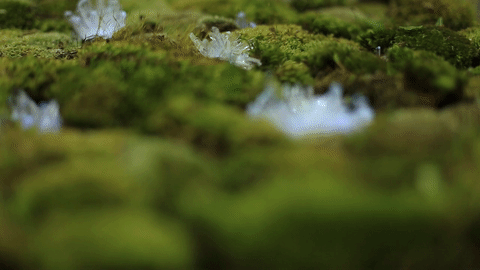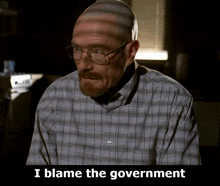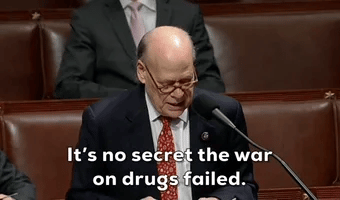- The Green Felon
- Posts
- Ganja-nomics:
Ganja-nomics:
History Of The Government 🔰 Growing Green 🌼

News 🏤 Highlights:
Federal Cannabis Research 📁 Program (1968) - The University of Mississippi began cultivating cannabis in 1968 under a federal contract to supply researchers 👩🏫, marking the inception of the only legal source of cannabis for scientific studies in the U.S. 🇺🇸 at that time. mpp.org
FDA’s Role in Cannabis 🥑 Research Oversight - Since the early 1970s, the FDA has overseen clinical research involving cannabis and its derivatives, reviewing over 8️⃣0️⃣0️⃣ investigational new drug applications related to cannabis 🏝️ products. fda.gov
Colonial America’s 🍔 Hemp Mandate (1619) - In 1619, the Virginia Assembly enacted legislation requiring every farmer to cultivate 🔹 hemp, recognizing its value for producing rope, sails, and clothing 🥾. oil.libertyfund.org

Quick Read 📙:
🏛️ Federal Cannabis Origins — The U.S. government began cultivating cannabis at the University of Mississippi in 1968 under NIDA oversight 👓, prioritizing research over potency.
🏛️ Nixonian Contradictions — While waging the War on Drugs, the Nixon administration simultaneously funded scientific marijuana studies 📒 and ignored pro-decriminalization findings.
🏛️ Medical Marijuana Distribution — The Compassionate IND Program controversially provided government-grown cannabis to patients 🙋♂️ despite marijuana’s Schedule I status.
🏛️ Inferior Cannabis Quality — Federal cannabis lacked cannabinoid richness, terpene diversity, and pharmacological efficacy compared to commercial-grade 🥇 marijuana.
🏛️ DEA Reform & Research Renaissance — Recent DEA changes have allowed licensed private entities to cultivate cannabis for advanced therapeutic and clinical 👨🔬 applications.

🌿 Government-Grown Weed: A History
The relationship between 🌍 government and cannabis 🌱 is a saga that defies simplicity, riddled with irony, bureaucracy, and the occasional botanical breakthrough. As legalization continues its erratic march across borders 🧭, few remember that some of the most comprehensive cannabis research—and yes, cultivation—has historically emerged from deep within the belly 🐋 of state-sponsored institutions.
Welcome to the under-lit corridors of government-grown weed: a story that is as much about science and sovereignty 🔬 as it is about paradox and prohibition. From Cold War drug trials to modern clinical distribution, the evolution of federally farmed cannabis deserves more than a footnote. It deserves a full-blown exposé—and possibly a few raised eyebrows. 😮.
Cannabis was demonized in other places as well, especially in Mexico... The history of these kinds of regulations is way more similar between Mexico and the U.S. than different.”
The University of Mississippi's Secret Garden 🌸
Let’s begin in the humid 💧 South, where since 1968, the University of Mississippi has been home to America's most controversial cannabis crop 🌽. Authorized by the National Institute on Drug Abuse (NIDA), this academic outpost grew weed that was less Cheech & Chong 🚗 and more cough & confusion.
While technically legal at the federal level, this weed was never intended for pleasure or profit—only for science 🧪. And unfortunately, most recipients of NIDA weed (primarily researchers and a very select few patients) often described it as something between lawn clippings and sadness 😰.
A study published in 2017 analyzed samples from this government stash. It found that NIDA cannabis contained lower potency 🌡️, fewer terpenes, and inconsistent chemical profiles. That’s right: the official weed being handed out by Uncle Sam barely got anyone high 🤯—even when used in clinical trials.

Operation Intercept and the Nixon Paradox 🕵️
Before the University of Mississippi’s greenhouses 🟩 could even dream of industrial lighting rigs, President Richard Nixon was launching a full-scale war on drugs. Ironically, it was under Nixon’s administration that the first federal marijuana research programs were given budgetary oxygen 💸.
Operation Intercept, designed to disrupt marijuana imports from Mexico 🇲🇽 in 1969, was both a geopolitical power move and a colossal failure. Meanwhile, back in the States, researchers funded by the very same government were studying the effects of cannabis on everything from creativity 🎨 to schizophrenia.
Nixon’s personal vendetta against cannabis ✳️ was so intense that he tried to suppress the findings of the 1972 Schafer Commission, which recommended decriminalization 🚫. That’s right—our federal institutions were simultaneously producing weed, researching its effects, and suppressing results that didn’t fit the political narrative.
Meet the Patients on Pot 💊
In one of the most bizarre 🧟 chapters of U.S. drug history, the Compassionate Investigational New Drug (IND) program was created in 1978. This federally-run system allowed a handful of Americans 🦅 to legally receive marijuana cigarettes for medical conditions ranging from glaucoma to multiple sclerosis.
These pre-rolled “joints” came in tins stamped with government logos 〽️ and were filled with that same subpar NIDA flower.
Let’s pause and visualize 🕶 this: patients legally puffing federally-grown joints provided by a government that still classified cannabis as a Schedule I drug—a category reserved for substances with “no accepted medical use.” Cognitive dissonance much?
By 1992, political pressure (and the AIDS 😷 crisis) led to the program’s closure for new applicants. Today, only a handful of living patients still receive these state-sanctioned joints.

TIMELINE OF U.S. GOVERNMENT-GROWN WEED 📊
Year 📅 | Event 🏕️ | Federal Agency Involved 👮♂️ | Notable Outcome ✍️ |
|---|---|---|---|
1968 | University of Mississippi begins cultivation | NIDA | Official cannabis research begins |
1972 | Schafer Commission Report | Nixon Administration | Recommends decriminalization (ignored) |
1978 | Compassionate IND Program starts | FDA & DEA | Medical cannabis supplied to select patients |
1992 | IND Program closed to new applicants | HHS | AIDS epidemic leads to restriction |
2017 | NIDA weed analyzed | Independent Researchers | Found low THC, inconsistent profiles |
2021 | DEA allows new growers | DEA | Opens door for modernized federal research |
Why Was the Government So Bad at Growing Good Weed? 🌾
There’s a scientific term 🔡 for what the government’s weed suffered from: sub-optimal cannabinoid expression. More colloquially, it’s called mid. The weed was poorly stored, improperly cured, and lacked the psychoactive consistency that defines modern cannabis 🫒 strains.
Cultivated in bulk under minimal lighting 💥 and standardized irrigation, NIDA cannabis represented academic agriculture at its most uninspired. The government’s primary goal was stability over quality: reliable, reproducible samples for longitudinal study, not craft-level flower for connoisseurs 🧐.
But as the cannabis industry blossomed in the private sector—think designer strains, terpene-rich 🤑 profiles, and THC percentages pushing the legal envelope—the government’s weed fell hopelessly behind.
In short: the feds were growing analog buds in a digital 💿 world.

2020s: The Federal Greenhouse Reforms 🏗️
In a stunning 🆒 reversal of decades of regulatory bottlenecks, the DEA announced in 2021 that it would allow private companies to grow cannabis for research purposes. This broke the University of Mississippi’s 53-year monopoly 🕰️ and ushered in a new era of competitive federal weed cultivation.
Now, biotech 🕹️ firms, universities, and research labs across the U.S. are engineering cannabis with exacting cannabinoid ratios and medical precision. The goal ⚽? FDA-approved cannabis-derived medications that could rival or even replace existing pharmaceuticals 💼.
One such drug, Epidiolex 🧿, already received approval for treating rare forms of epilepsy. It’s derived from CBD, a compound first isolated in 1940 but long buried under red tape 🧻.
Government Weed, Then and Now 🪙
The history of government-grown weed 🍂 is one of contradiction: a tale where prohibition funded progress, and research often outpaced ideology. While it once symbolized inefficiency and overregulation 🚨, today’s federally-sanctioned cannabis cultivation is moving toward scientific legitimacy and therapeutic innovation.
Next time you light up 🔥 a joint with citrus notes and frosty trichomes, remember the dry, dusty flower rolled by bureaucrats in Mississippi—and be grateful that public opinion, state law, and molecular biology finally got high together 🎓.
Is it time ⌚️ for the government to finally grow weed that doesn’t taste like betrayal 🔪?
🧘♀️ Surrender To Flow 💦

The information provided in this newsletter is for informational purposes only and does not constitute medical, legal, or professional advice. Always consult with a qualified professional before making any decisions based on the content shared here.